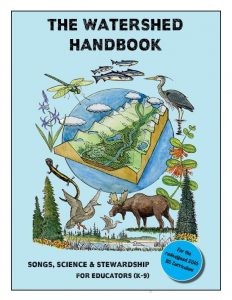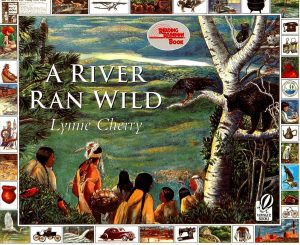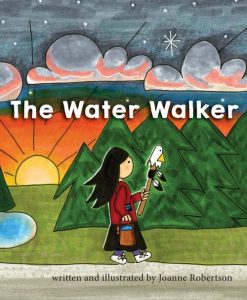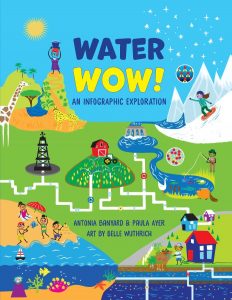Because of the importance of water to the health and well-being of all Earth’s inhabitants, and because of multiple threats to water supplies worldwide, a focus on water is a timely topic for classroom study at any grade level. By planning ahead, you will be ready to celebrate World Water Day in March.
World Water Day
World Water Day is a United Nations international day of observance celebrated annually on March 22. The focus for this day is on the sustainability of fresh water resources and the importance of global access to clean water and sanitation.
UN-Water chooses a different theme each year and is supported by organizations that are related to that theme. The first World Water Day was observed on March 22, 1993.
Future Themes
2018: World Water Day – Nature for Water
2019: World Water Day – Leaving No One Behind (Human Rights and Refugees)
2020: World Water Day – Climate Change
UN-Water, and their supporting organizations, plan events that are designed to raise public awareness and inspire positive action for water issues. Some of those events include:
- the production and viewing of films
- educational events (seminars, symposiums, etc.)
- theatrical, art and musical productions
- special TV, radio and Internet broadcasts
- fund raising events for fresh water projects
Each year UN-Water also releases A World Water Development Report that focusses on the current theme.
Websites
UN-WATER
Provides information about the work of UN-Water: unwater.org
Pacific Water Research Centre at Simon Fraser University
This centre promotes the research of various water issues (locally and globally): sfu.ca/pwrc.html
Canada’s Watershed Report
The World Wildlife Fund has just completed an assessment of Canada’s 25 major watersheds. These results are at: http://watershedreports.wwf.ca/#intro
Teacher’s Resource
 The Watershed Handbook
The Watershed Handbook
Songs, Science and Stewardship for Educators (K – 9)
Project Manager, Holly Arntzen
Artist Response Team, 2017
ISBN 978-0-9736847-3-5 (pbk)
ISBN 978-0-9736847-4-2 (ebook)
$33.50 (pbk), 85 pp, includes the CD
artistresponseteam.com
The Watershed Handbook is a music-based learning resource and guide for the Watershed Song composed by Holly Arntzen, Kevin Wright and David Sinclair of the Wilds Band (the CD is included with the resource). The handbook outlines an inquiry based approach to having students become familiar with the watershed that they live in. The following topics are included in the resource:
- watersheds and their connection to climate
- the transfer of biomass from the ocean to land
- aboriginal connections to watersheds
- glaciers
- habitat restoration and adaptation
This thoughtful, well organized and effectively illustrated resource (lots of diagrams, charts, maps and photographs) is designed around the new BC Science and Social Studies curriculum and can be used in a number of ways by the classroom teacher.
Note: Water for Life is a television special that originally aired on May 14, 2016 on CTV 2 in Alberta. Featuring the music of Holly Arntzen and Kevin Wright, this one-hour broadcast is now available to view at the artist response team website. The presentation includes music from the Wilds band (with the participation of a children’s choir) as well as up to date facts and information about Canada’s fresh water resources.
Books
 Enough Water?
Enough Water?
A Guide to What We Have and How We Use It
by Steve Conrad
Firefly books Ltd., 2016
ISBN 9781550858183
$24.95 (hc) / $9.95 (pbk), 72 pp, index, glossary, bibliography, ages 8 – 12
fireflybooks.com
What kid wouldn’t want to know how many litres of water it takes to make a smartphone? Enough Water? is a timely and insightful book that explains to young readers the extent to which water consumption affects the world around them. The colourful illustrations and very clear graphs make this information accessible to a broad range of reading levels. Other issues addressed include limited sources of freshwater, drought and pollution. The book ends with water saving tips (bathroom, kitchen, laundry and outdoors) as well as some suggestions to adults for lifestyle changes that would conserve water.
Enough Water? is a great source of information that would support a number of science and social studies classroom themes including a study of fresh water ecosystems, the water cycle, climate change, the consumption and preservation of our fresh water resources.
One Well: The Story of Water on Earth
by Jan Bourdeau Waboose
illustrated by Brian Deines
Kids Can Press, 2000
ISBN 1-55074-697-9 (sc)
$8.95, 32 pp, ages 5 – 8
kidscanpress.com
True to its title, this book clearly explains to young readers how all water on earth is connected (from raindrops, rivers, lakes, oceans, ponds, wetlands and even icecaps, all water is part of one global well). The water cycle is also explained and the dependance of all living things on clean water sources is made clear. One Well describes some of the pressures on our freshwater resources (e.g., pollution, increased demand due to growing populations) and ends with a call to action (ways to conserve and protect water).
One Well is a beautifully illustrated and colourful book that would support science and social studies themes including: the water cycle, plant and animal habitats, the consumption and preservation of freshwater resources.
A River Ran Wild
by Lynne Cherry
Houghton Mifflin Harcourt, 2002
ISBN 978-0-15-216372-3
$7.99, 40 pp, maps, ages 6 – 10
hmhco.com
A River Ran Wild is an illustrated environmental history (1400 – 1990) of the Nashua River. The book begins with a description of the pristine river valley and then introduces the settlement of the Algonquin peoples in the 1400s, the colonial settlements in the 1600s, and the effects of the industrial revolution and dam building in the 1800s. By the mid 1900s the Nashua river system was declared ecologically dead. In 1962 Oweana (a descendant of the first Algonquin settlers), Marion Stoddart and the Nashua River Cleanup Committee began to clear away garbage from the banks of the river and to lobby for laws to protect all rivers in the US. In 1966 the Massachusetts Clean Water Act was passed and the National Environmental Protection Agency was established. After many years of hard work the Nashua River system was finally restored.
A River Ran Wild would make a great read aloud book for primary classrooms and with adult guidance it would make an effective springboard to a study of the effects of pollution on our freshwater ecosystems today. It is also a wonderful example of how the determination of a few individuals can make a difference in the world.
 The Water Walker
The Water Walker
written and illustrated by Joanne Robertson
Second Story Press, 2017
ISBN 978-1-77260-038-4
$16.95, 36 pp, ages 6 – 9
secondstorypress.ca
The Water Walker tells the true story of Josephine Mandamin, an Ojibwe grandmother (Nokomis), who walked 5,144 kilometres to raise awareness of the need to conserve and protect water (Nibi). She inspired others to join her as the Mother Earth Water Walkers. Together, they have walked around all the Great Lakes. Josephine completed her last walk in 2017.
The story incorporates many Ojibwe words which are explained in an illustrated glossary and pronunciation guide. Playful, colourful illustrations accompany the text. The author/illustrator of The Water Walker, Joanne Robertson, is the founder of the Empty Glass for Water campaign that aims to bring attention to the drinking water crisis in indigenous communities across Canada (emptyglassforwater.ca).
 Water Wow! An Infographic Exploration
Water Wow! An Infographic Exploration
by Antonia Banyard and Paula Ayer
illustrated by Belle Wuthrick
Annick Press, 2016
ISBN 9781554518210 (sc)
ISBN 9781554518227 (hc)
$14.95 (sc) / $22.95 (hc), 64 pp, ages 9 – 12
annickpress.com
This book will appeal to visual learners—facts about water are presented in short information bites, formatted graphically with lots of colour and humour. I suspect that most questions that students will have about water will be answered somewhere in this book!
ABOUT THE AUTHOR
Brenda Boreham
Brenda has 35 years of classroom experience. She has presented workshops on literacy strategies, and has written a number of resources for teachers. She remains passionate about matching up kids with books.
This article is from Canadian Teacher Magazine’s Sept/Oct 2017 issue.












